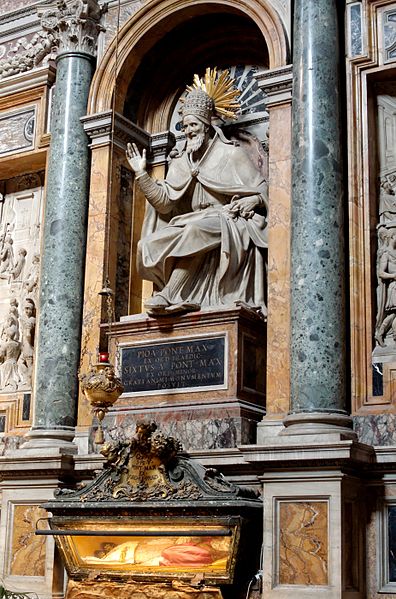You’d never gues s it from the media smoke swirling around St. Peter’s these past few weeks, but the consensus is pretty much yes. For WaPo’s imprimatur, there’s today’s dateline from Vatican City by Anthony Faiola. Garry Wills’ nihil obstat appears on the New York Review‘s blog.
s it from the media smoke swirling around St. Peter’s these past few weeks, but the consensus is pretty much yes. For WaPo’s imprimatur, there’s today’s dateline from Vatican City by Anthony Faiola. Garry Wills’ nihil obstat appears on the New York Review‘s blog.
Still, the wheels of the Roman Catholic Church grind slow, and it’s never wise to jump to conclusions. So here’s a simple test. If they stop trying to make popes into saints, then OK, the resignation of Benedict XVI will have signaled an historic demystification. If not, not so much.
In the Church’s early days, a lot of popes became saints by popular acclaim, often because they underwent martyrdom. But after the turn of the millennium–and the papacy’s 13th-century assumption of control over the process–a papal saint became a rarity. Between 1000 and 1954, just four made the grade, the last being Counter-Reformation generalissimo Pius V, who died in 1572 and was canonized in 1712.
That’s all changed. Now, as David Gibson pointed out in a New York Times piece a few years ago, “nearly every recent pope” beginning with the 19th-century culture warrior Pius IX is “on the canonization track.” That might be called mystification with a vengeance or–with apologies to Max Weber–the charismatization of routine.
Whatever, we should get an answer to the test in relatively short order. First up will be the presumptive demystifier himself, Benedict XVI. Saintly renouncer or merely human retiree? Once the 85-year-old goes to his eternal rest, the Vatican will decide.





